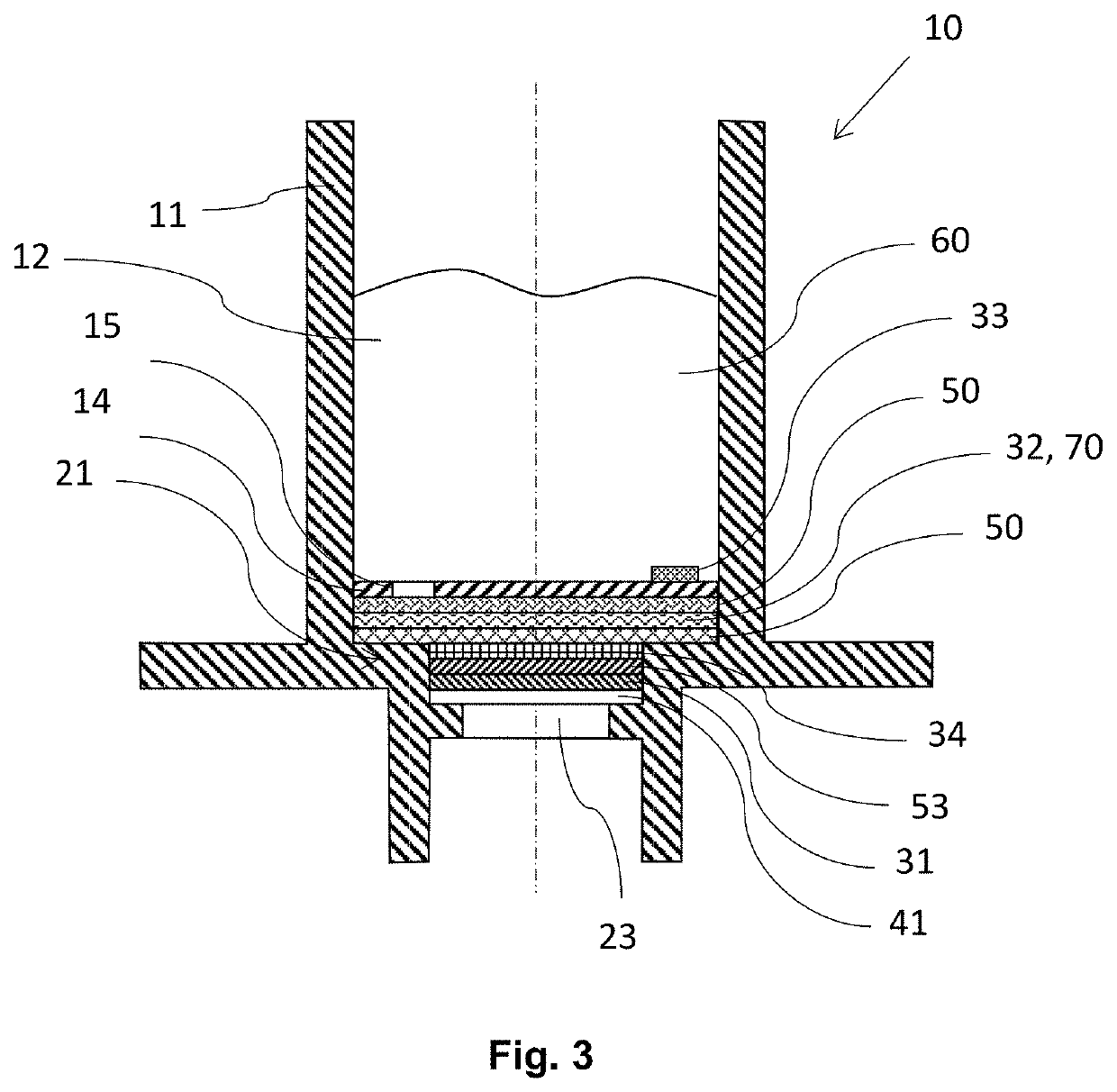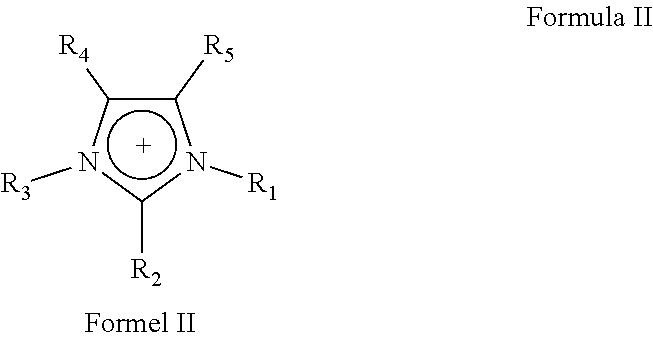Electrochemical gas sensor
a gas sensor and electrochemical technology, applied in the field of electrochemical gas sensors, can solve the problems of high cross sensitivities, low concentration of target gas cannot always be reliably detected, and the temperature dependence of the detection method, so as to achieve the effect of long-term
- Summary
- Abstract
- Description
- Claims
- Application Information
AI Technical Summary
Benefits of technology
Problems solved by technology
Method used
Image
Examples
Embodiment Construction
[0049]Referring to the drawings, FIG. 1 shows a comparison of the measured signals between an electrochemical gas sensor according to the present invention (black line) with an electrochemical gas sensor known from the state of the art (grey line) for identical experimental setups. The current intensity in μA is plotted over the time in hours.
[0050]The electrochemical gas sensor according to the present invention additionally has a separator layer (polymer nonwoven carrying boric acid) between the working electrode and the counterelectrode. Both gas sensors were exposed first to air and then to 4.4 ppm of hydrogen fluoride as an analyte gas for 45 hours. The upper signal, which is not according to the present invention, shows the measured signal of a gas sensor known from the state of the art, whereas the lower signal shows the measured signal of the electrochemical gas sensor according to the present invention. It can clearly be seen that the grey line of the gas sensor known from ...
PUM
| Property | Measurement | Unit |
|---|---|---|
| current intensity | aaaaa | aaaaa |
| current intensity | aaaaa | aaaaa |
| pH | aaaaa | aaaaa |
Abstract
Description
Claims
Application Information
 Login to View More
Login to View More - Generate Ideas
- Intellectual Property
- Life Sciences
- Materials
- Tech Scout
- Unparalleled Data Quality
- Higher Quality Content
- 60% Fewer Hallucinations
Browse by: Latest US Patents, China's latest patents, Technical Efficacy Thesaurus, Application Domain, Technology Topic, Popular Technical Reports.
© 2025 PatSnap. All rights reserved.Legal|Privacy policy|Modern Slavery Act Transparency Statement|Sitemap|About US| Contact US: help@patsnap.com



